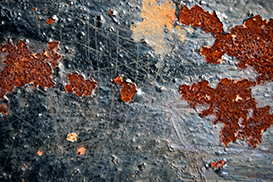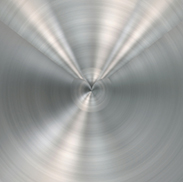Anti corrosion protection involves a sacrificial coating (normally Zinc) which protects steel from oxidization. The term sacrificial indicates that this layer degrades over time, that is, it will eventually deplete and corrosion of the base metal layer (substrate) will start. It is customary to measure the level of anti corrosion resistance by establishing the thickness of the protective layer (measured in microns). The electrolytic zinc coatings can be improved in appearance and protective power with a final passivation treatment. This passivation gives particular colorings; for this reason electrolytic zinc-plating is also called "zinc-chromating". According to the application conditions and environment, it may be necessary to increase the coating thickness.IONICS offers zinc-plating with Cr III passivation, in accordance with the RoHS directive.
The nickel-plating process is the same as the zinc-plating process except that the coating is made of nickel. It is able to bestow, according to the thickness, a good resistance to atmospheric corrosion and even, better, compared to various types of zinc-plating. Between the nickel coating and the base material, a layer of copper can be deposited in order to increase adhesion of the layer of nickel and avoid the "exfoliation" phenomenon.
Gold and tin are the most popular plating metals used in the connector industry.Ferom a corrosion point of view, gold is the metal of choice, because it is the most inert material.Tin may offer an important price advantage, but is not always the most efficient solution: in mated condition, tin has a maximum contact resistance expectation of less thane 50 mΩ over lifetime, whereas gold has 20 mΩ. To achieve this, tin requires a contact normal force (CNF) of 2 N, while gold needs a CNF of 0,4 N. Tin’s higher CNF creates a higher mating force, which limites the number of contacts in the connector, as well as increase contact point wear when mating and unmating. Typically, tin plated connectors are not suitable for more than 50 mating cycles, on the other hand gold can support up to 500 mating cycles.
Extreme corrosion conditions due to the chemical environment, temperature range, humidity,… sometimes needs specific anti-corrosion solutions.IONICS developed specific sol-gel based anti-corrosion solutions. Those coatings are not sacrificial layers, which by definition are not permanent, but act as a real barrier layer avoiding any contact between the base metal and the aggressive environment. Specific corrosion inhibitors can be mixed into the coating enabling self-healing properties of the barrier layer in case of accidental mechanical damage of the coating.IONICS can develop specific corrosion inhibitors for each specific substrate and application.

Anodizing is an electro-chemical process which transforms the outer layer of the aluminum substrate into a very hard, transparent and porous oxide layer. After a final sealing step, the result is an exceptionally durable, corrosion-proof pure aluminum product which retains all the qualities and the metallic sheen of natural aluminum.The final anti-corrosion performance of anodized aluminum depends on the anodic film thickness as well as the sealing step.
IONICS developed a unique sealing process (applied by spray or roll-coating), which reduces the anodic film thickness by a factor 5 without losing any advantage of the original ‘thick’ anodic layer.
In a very competitive market, the building industry, the traditionally anodized aluminum is generally more expensive compared to painted products. Anodized aluminum is therefore generally reserved for wealthy customers and private buildings.
IONICS innovative NANOXID sealing solutions makes anodized aluminum more competitive for medium budget projects, currently exclusively reserved for painted aluminum.
